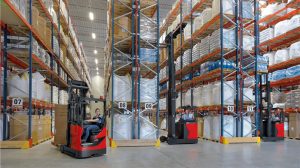Are you tired of wasting time and energy in your warehouse? Look no further! In this guide, we’ll show you how to choose the perfect reach truck that will boost your productivity to new heights. Whether you need a compact model for tight spaces or a heavy-duty one for lifting heavy loads, we’ve got you covered. With our expert advice, you’ll be able to assess your warehouse needs and find the key features that will make all the difference. Don’t wait any longer – let’s get started!
Factors to Consider When Choosing a Reach Truck
When choosing a reach truck, it’s important to consider factors such as maximum lift height and load capacity. These two elements are crucial in determining the efficiency and effectiveness of your operations. The maximum lift height refers to how high the reach truck can extend its forks, allowing you to access and stack materials at different levels within your warehouse. It is essential to select a reach truck with a lift height that matches the requirements of your facility. Load capacity, on the other hand, pertains to the weight limit that the reach truck can safely handle. This factor is vital for ensuring that your reach truck can efficiently transport and stack heavy loads without compromising safety or risking any damages. By carefully evaluating these factors, you can choose a reach truck that optimizes productivity while maintaining safety standards within your operations.

Understanding the Different Types of Reach Trucks
Understanding the various types of reach trucks can help improve operational efficiency. When it comes to choosing the right reach truck for your business, it’s important to understand the different options available. One type is the stand-up reach truck, which allows the operator to remain standing while operating the vehicle. This type is ideal for narrow aisles and tight spaces. Another option is the sit-down reach truck, which provides a more comfortable seating position for longer periods of operation. This type is often used in larger warehouses with wider aisles. Additionally, there are also double-deep reach trucks that can access two pallets deep within racking systems, maximizing storage capacity. By understanding these different types of reach trucks and their capabilities, you can make an informed decision that will enhance productivity in your operations.
Assessing Your Warehouse Needs and Layout
Assess the layout and needs of your warehouse to determine the most efficient setup for your operations. Start by evaluating the size and shape of your warehouse. Consider factors such as ceiling height, aisle width, and storage capacity. This will help you determine the type and size of reach truck that best suits your needs.
Next, analyze your inventory and order volume. Are you dealing with heavy or bulky items? Do you receive a high volume of orders daily? These considerations will guide you in selecting a reach truck with the appropriate load capacity and lifting height.
Additionally, assess the condition of your warehouse floor. Look out for any obstacles or uneven surfaces that may affect maneuverability. It is crucial to choose a reach truck with excellent traction control to ensure safety and efficiency during operation.
Key Features to Look for in a Reach Truck
One important feature to consider in a reach truck is its load capacity, which determines how much weight it can handle. When choosing a reach truck for your warehouse, it is crucial to assess the average weight of the loads you will be moving. The load capacity of a reach truck typically ranges from 2,500 to 5,500 pounds. It is essential to select a reach truck with a load capacity that exceeds your maximum load weight requirements to ensure safe and efficient operations. Overloading a reach truck can lead to equipment damage, accidents, and decreased productivity. Therefore, carefully evaluate your warehouse needs and choose a reach truck with the appropriate load capacity for optimal performance and safety in your daily operations.
